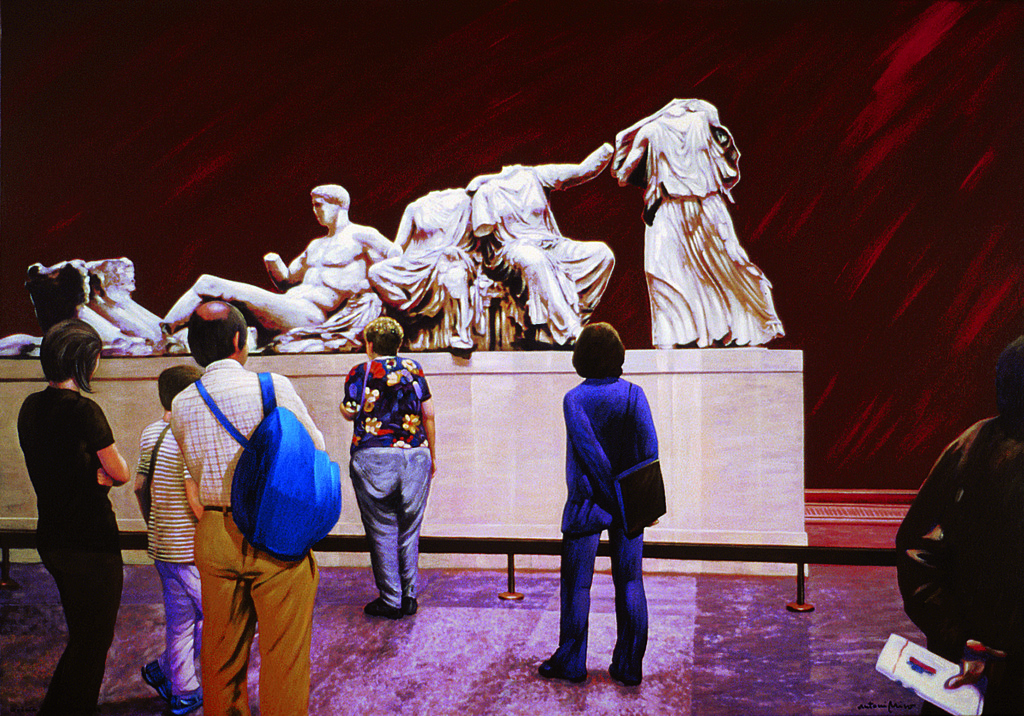Grècia al british (Greece at the british museum)
During the first decade of the 21st century, the artist reflects on the role museums play in contemporary societies. This interest is embodied in a series of pieces that treat the museums scattered round the world in diverse ways. On some occasions, the museums are depicted as architectural artefacts that stand out in the urban setting as containers of art dominating the scenery. In yet other cases, museums’ role in housing key cultural heritage is highlighted, showing the inside of buildings whose purpose is to foster the appreciation of works of art.
Miró begs the question as to what the mission of these institutions is. The argument that is often put forward is that they solely exist to conserve, catalogue, disseminate, and research works of art. Sometimes other reasons are put forward (tourism, urban planning, etc.), which are far from their original public use. Others directly challenge the legitimacy of museums, alleging misappropriation of cultural goods, merchandising of objects d’art, trend-setting for financial ends, and so on.
There is also concern about the growing trivialisation of learning, critical reflection, and fruition that should underlie the aesthetic experience in museums in accordance with the spirit of the Enlightenment that gave rise to their foundation in the way these institutions are generally understood even nowadays.
In this particular case, we are looking at a view of Room 18 of the British Museum in which several visitors are gazing at The Elgin Marbles. Here are some of the round sculptures that adorned the left side of the Parthenon pediment. A paradigmatic fragment of Classical Greece lies transplanted to another temple that, though of a cultural and educational nature, affirms the hegemony of an imperial nation.
The artist is not blind and he weeps, as Lord Byron said, at the British Empire’s sacking of the Acropolis in Athens, and of so many other sites. Those ruins, in their condition of material means of identification of the traits of a culture, Classical Greek in this case, were undermined, while foreign museums’ collections kept growing — a process that has been under way ever since the eighteenth century. The title of the piece ironically implies that making Classical Greece and its heritage accessible to everyone comes at the price of damaging the original site.
In the scene, one can see ordinary folk looking at the extraordinary achievements of the classical world. Yet all the works are doubly scarred by the passage of time and by the aforementioned decontextualisation. Perhaps only one person — the woman in blue — plays a more prominent role because of her attitude towards the piece, her privileged position within the scene and because she seems to draw the glances of some of the people behind her. In any event, it is the statues (on pedestals as one would expect) that grab our attention and that of the museum visitors. However, Antoni Miró gives us an opportunity in his painting that is denied to the museum-goers: he replaces the stone slabs that in fact lie behind the statues with a background painted in dark red, which is believed to be their original ancient background. Thus, Miró’s work allows us to recover some traces of the past through this transposition.
Santiago Pastor Vila
